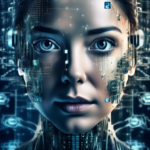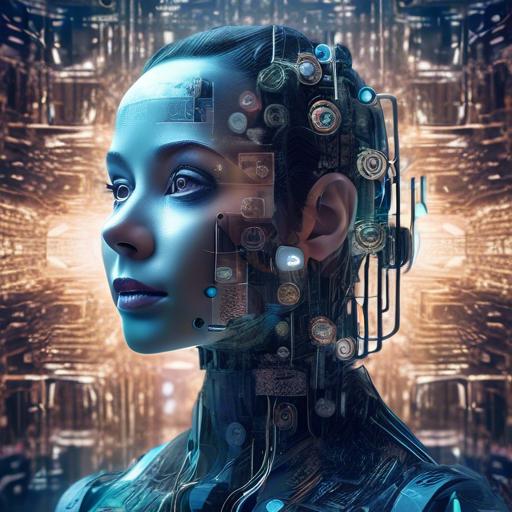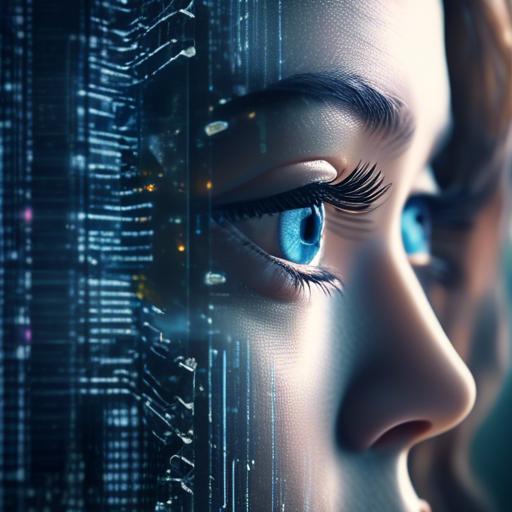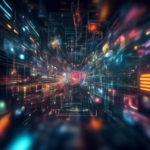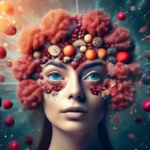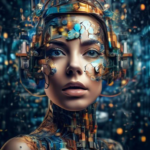In the shimmering realm of digital innovation, where pixels dance and algorithms weave intricate tapestries of art, artificial intelligence (AI) image generators emerge as enchanting artisans of the modern age. These marvels of technology hold the power to conjure breathtaking visuals from mere whispers of imagination, offering creatives an endless canvas upon which to paint their dreams. Yet, as we revel in this transformative artistry, a formidable question looms on the horizon: How do we ensure the fair use of these wondrous tools?
Imagine a world where every stroke of brilliance, every burst of creativity, is respected, celebrated, and rightfully accredited. A world where the boundaries of inspiration and originality coexist harmoniously with innovation and technology. This utopian vision beckons us to embark on a journey of understanding and responsibility. As we delve into the nuances of ensuring fair use of AI image generators, we’ll explore the ethical oaths we must uphold and the collaborative spirit that will guide us to an equitable future.
Join us in this exploration, where empathy meets ingenuity, and together, we’ll unravel the threads of fairness, creativity, and respect in the dazzling tapestry of AI artistry.
Table of Contents
- Understanding Fair Use in the Age of AI Image Generation
- Navigating Copyrights and Creative Commons Licenses
- Ethical Guidelines for AI Image Use
- Best Practices for Crediting AI-Generated Art
- Balancing Innovation with Intellectual Property Rights
- Community Standards: Promoting Fair Use Among AI Users
- Case Studies: Fair Use in Real-World Scenarios
- Building Transparency into AI Image-Generation Tools
- Educational Outreach and Training for Responsible AI Use
- Wrapping Up
Understanding Fair Use in the Age of AI Image Generation
In today’s ever-evolving digital landscape, the concept of fair use has taken on new dimensions with the rise of AI-generated images. Understanding how to navigate this legal framework is essential for artists, developers, and anyone utilizing AI to create visual content. Fair use allows for limited use of copyrighted material without the need for permission from the rights holder under certain conditions, but how does this translate to AI-generated content?
When utilizing AI to generate images, consider the following key factors to ensure compliance with fair use guidelines:
- Purpose and Character of the Use: Is the use transformative, adding new expression or meaning to the original? Commercial uses are typically scrutinized more heavily than non-commercial uses.
- Nature of the Original Work: Using factual or non-fictional material is more likely to be considered fair use compared to creative works.
- Amount and Substantiality: Less is more; using small, less significant parts of the original work can favor fair use.
- Effect on Market Value: Does the new use impact the market for the original work? If it potentially reduces the market value or demand for the original, it might not qualify as fair use.
To help visualize these principles, here’s a simple table outlining examples:
| Scenario | Fair Use Consideration |
|---|---|
| Transforming a famous painting into a modern AI-generated abstract | Likely fair use; transformative and minimal impact on the original market |
| Replicating a copyrighted photograph for commercial products | Unlikely fair use; commercial use and potential market impact |
| Using AI-generated versions of public domain images | Generally safe; public domain materials are not restricted by copyright |
It’s also important to stay updated on evolving laws and regulations, as the legal landscape around AI-generated content is rapidly changing. Engage with legal experts to navigate more complex scenarios and seek guidance tailored to your specific use cases.
To foster a community that respects and promotes fair use, consider contributing to awareness and education initiatives. By sharing knowledge and resources, we can collectively uphold ethical standards and support the thriving world of AI creativity.
Navigating Copyrights and Creative Commons Licenses
As AI-powered image generators continue to evolve, understanding how to correctly navigate copyrights and Creative Commons licenses is paramount. Ensuring fair use involves a careful balancing act between leveraging innovative technologies and respecting the intellectual property rights of creators.
**Copyrights** protect original works of authorship, including images. When using AI image generators, it’s vital to ensure that the images created or derivatives generated do not infringe on existing copyrights. Keep these practices in mind:
- Check if the AI tool provides **license information** for generated images.
- Use images for **transformative purposes** to support fair use claims, such as parody or commentary.
- Always give **proper attribution** to any original works integrated into the new creations.
**Creative Commons (CC) licenses** offer more flexibility by allowing creators to specify how their works can be used by others. When using AI image generators, understanding the types of CC licenses is crucial:
| License | Permission |
|---|---|
| CC BY | Allows others to distribute, remix, and build upon the work, even commercially, as long as they credit the creator. |
| CC BY-SA | Same as CC BY, but new works must be licensed under identical terms. |
| CC BY-NC | Others can remix, tweak, and build upon the work non-commercially. |
Not all images generated by AI tools are created equally in the eyes of the law. Some services may train their algorithms on datasets of copyrighted material, which can potentially produce derivative works with identifiable characteristics. As a best practice, it’s advisable to:
- Use **public domain** or **personally-owned** photos for training datasets.
- Ensure AI tools explicitly state that the outputs are free to use, preferably with a CC0 or public domain designation.
- Avoid generating images that closely mimic known copyrighted artwork.
The intersection of technology and law can be confusing, but by adhering to these guidelines, you can harness the power of AI image generators ethically and legally. Educating yourself about intellectual property rights and Creative Commons licenses puts you on solid ground to innovate responsibly.
Ethical Guidelines for AI Image Use
The proliferation of AI image generators has opened up new avenues for creativity and expression. However, with great power comes great responsibility. Ensuring fair and ethical use of these tools is key to preserving the integrity and rights of all stakeholders involved. Here are some guidelines to consider:
- Respect Copyrights: Always ensure that the images generated and used do not infringe on existing copyrights. This includes avoiding the unauthorized use of copyrighted materials and seeking permission where necessary.
- Protect Privacy: Do not use AI-generated images to manipulate or create fake images of real individuals, especially without their consent. This includes avoiding deepfakes and other forms of identity misuse.
- Promote Transparency: Be clear about the use of AI in the creation of images. Transparency helps maintain trust and allows audiences to appreciate the technological aspects without feeling deceived.
| Guideline | Description |
|---|---|
| Attribution | Always give credit to original creators where due, whether they are human or datasets used for training AI. |
| No Harm | Ensure that AI-generated images are not used to spread misinformation, hate speech, or cause harm to individuals or groups. |
Adhering to these guidelines not only protects creators and users but also enriches the AI-generated content ecosystem. Embrace these ethical standards to pave the way for a fair and inclusive digital future. It’s crucial to balance innovation with responsibility to create a positive impact on society.
Best Practices for Crediting AI-Generated Art
While AI-generated art is a marvel of modern technology, it’s essential to give credit where credit is due. **Acknowledging the AI tool** used and its developers not only enhances transparency but also fosters an ethical creative ecosystem. Highlight the specific AI program in use—be it DALL-E, MidJourney, or others. Specify version numbers where applicable. This avoids ambiguity and ensures the acknowledgment is specific and accurate.
Moreover, alongside crediting the AI tool, **give a nod to the dataset** it was trained on. This is crucial, especially if the dataset’s creators allowed for commercial or derivative use of their content. Their work forms the backbone of the generated art and deserves proper recognition. Failing to mention the dataset can sometimes undermine the contributions of numerous hidden collaborators.
In some scenarios, it’s equally important to **mention the initial prompt or idea** that led to the generated art. This could be a short description or keywords used to direct the AI. Adding details such as this provides insight into the human creativity that complements the machine’s capabilities, fostering a deeper appreciation for the synergy between human and artificial intelligence.
- Tool and Version: Clearly state the AI tool and version.
- Dataset Recognition: Mention the dataset behind the AI training.
- Initial Prompt: Include insights into the creative input you provided.
Here’s an example table to illustrate how you can structure the crediting data:
| Aspect | Details |
|---|---|
| AI Tool | DALL-E 2 |
| Dataset | OpenAI’s Image Database |
| Prompt | “Sunset over a futuristic cityscape” |
Implementing these best practices not only celebrates the technology and datasets but also builds trust with your audience. By modeling this behavior, you pave the way for an artistic community that respects and recognizes every element contributing to the creative process.
Balancing Innovation with Intellectual Property Rights
With the rise of AI-driven creativity, balancing the promise of innovation with the safeguarding of creators’ rights becomes a delicate dance. Ensuring fair use of AI image generators involves navigating the labyrinth of intellectual property (IP) laws while fostering an environment where creativity can thrive unimpeded. AI, much like human artists, draws inspiration from a myriad of sources, raising questions about the delineation of original content versus derivative works.
One approach to straddling this line is by defining and enforcing standards for AI-generated content. Considerations include:
- Transparent Dataset Usage: AI image generators should disclose the datasets they are trained on to ensure that copyrighted materials aren’t being exploited without permission.
- Licensing Models: Implementing clear licensing agreements that outline how AI-generated images can be used, reproduced, and monetized could protect both the AI developers and the original content creators.
- Attribution Practices: Encouraging or mandating attribution for AI-generated works can provide the original content creators with recognition and potential royalties.
These practices could be facilitated through the development of new IP frameworks and policies tailored specifically for AI-generated content. However, crafting these policies requires input from legal experts, AI developers, and content creators alike, ensuring that all voices are heard and protected. To explore this balance further, it might be useful to examine precedents in related fields.
| Field | Precedent |
|---|---|
| Music Sampling | Royalties and permissions for sampled tracks |
| Software Development | Open-source versus proprietary code usage |
| Literature | Fan fiction and its impact on original works |
By examining how other creative industries have navigated similar issues, we can derive actionable insights for managing AI-generated image rights. The goal is to foster an ecosystem where AI innovation does not come at the expense of original creators, ensuring a fair and balanced symbiosis. This balanced approach not only protects intellectual property but also paves the way for the ethical evolution of AI in the creative world.
Community Standards: Promoting Fair Use Among AI Users
In an effort to foster a collaborative and respectful community, it is essential for all users to understand and abide by fair use guidelines when utilizing AI image generators. Not only does this ensure legal compliance, it also promotes ethical interactions and respects the labor and intellectual property of creators. Below, we’ve outlined several key points to keep in mind:
- Respect Copyright and Intellectual Property: Always ensure that the images or material you utilize from AI generators do not infringe upon existing copyrights. AI tools may inadvertently recreate copyrighted materials, so double-checking these outputs can prevent potential legal issues.
- Attribute Creators: If an AI-generated image incorporates elements from existing works, make sure to give appropriate credit. This demonstrates respect for the original creators and promotes an ethical use of technology.
- Avoid Misrepresentation: Clearly communicate when an image has been AI-generated. Misleading representation can undermine trust and devalue authentic creative endeavors.
Understanding the boundaries of fair use can be complex; however, a few guiding questions can often clarify the correctness of an image’s usage:
| Factor | Questions to Consider |
|---|---|
| Purpose | Is the use transformative, adding new expression or meaning? Is it for non-commercial, educational, or commentary purposes? |
| Nature | Is the original work more factual than creative? Does its nature support fair use? |
| Amount | Have you used only the necessary amount of the original work? |
| Effect | Does this use negatively impact the market for the original work? |
Promoting transparency within the AI community not only builds trust but also ensures that we uphold the value of creative and intellectual labor. As members of this evolving digital landscape, let us commit to sharing responsibly and thoughtfully, paving the way for sustainable and respectful technological advancements.
Case Studies: Fair Use in Real-World Scenarios
AI image generators have revolutionized how artists, designers, and marketers create visual content. The key to using these tools effectively and ethically lies in understanding fair use laws and learning from real-world examples. Companies and individuals alike have navigated these waters successfully by adhering to certain principles and guidelines.
- Transformative Use: When using AI-generated images, it’s crucial to add new expression, meaning, or message to the original work. For instance, a digital artist might use an AI tool to create a base image and then manually add unique artistic elements, transforming the piece completely.
- Non-Commercial Projects: Projects that are educational, research-driven, or non-profit are more likely to qualify as fair use. This is especially true if the AI-generated images are modified significantly or are part of an analytical critique.
- Credit and Attribution: Giving credit to the original creators or platforms can also bolster a fair use argument. While not legally mandatory, it shows respect for the original work and can be seen as good practice.
Consider the following examples, where different organizations successfully leveraged fair use principles:
| Scenario | Resolution |
|---|---|
| University Research Project | Students used AI-generated images for visual data analysis, citing all sources and ensuring the images were substantially altered. |
| Advertisement Campaign | A startup used AI images for concept pitches, obtaining licenses for all final commercial uses, but relied on fair use for the initial drafts. |
| Online Art Portfolio | An artist displayed mixed-media works where AI-generated images were transformed and credited, complying with fair use by adding substantial new content and context. |
Another critical component involves continuous learning and adapting. Legal landscapes evolve, and keeping abreast of the latest fair use cases can provide essential insights. Supportive online communities and professional legal advice are invaluable resources for anyone navigating the fair use of AI-generated images.
Ultimately, ethical usage of AI image generators requires a balance of creativity, respect, and legal knowledge. By understanding fair use and its applications, creators can harness the full potential of AI tools while safeguarding originality and respecting intellectual property rights.
Building Transparency into AI Image-Generation Tools
To ensure that AI image-generation tools are used fairly and ethically, it’s crucial to build mechanisms that foster **transparency**. Transparency doesn’t only benefit users but also creators and stakeholders involved in the AI ecosystem. One primary aspect is enhancing the accessibility of metadata, which can give insight into the AI’s decision-making process and the origin of the generated content.
Key elements to implement:
- **Metadata Accessibility:** Display comprehensive and easily understandable metadata for each generated image. This includes information such as source data, the algorithm used, and any post-processing steps.
- **Algorithm Disclosure:** Provide clear details on the algorithms and models being used, including their training datasets and any biases they might have.
- **User Education:** Equip users with the knowledge they need to understand how these tools function, and any ethical concerns surrounding their use.
Additionally, promoting **open-source platforms** can also play a significant role in maintaining transparency. Making the core code and datasets available publicly allows experts to audit and identify biases or potential misuse proactively. Open-source initiatives encourage a community-driven approach to identifying and addressing issues.
| Transparency Aspect | Implementation |
|---|---|
| Metadata Accessibility | Visible metadata for each image |
| Algorithm Disclosure | Clear details of algorithms used |
| User Education | Educational resources and guides |
Moreover, regulating bodies and platform developers can work together to create **standards and certifications**. By establishing these standards, we ensure that AI image-generation tools adhere to ethical guidelines, respecting both creators’ rights and users’ expectations. These standards should be periodically reviewed and updated to address the evolving landscape of AI technology.
Educational Outreach and Training for Responsible AI Use
Advancing the knowledge surrounding **AI image generators** is crucial to promote their ethical and fair use. One effective strategy is through comprehensive educational outreach programs. By targeting developers, users, and policymakers, such initiatives can foster a responsible culture. Key elements to consider include:
- Understanding AI bias and discrimination.
- Data privacy and user consent.
- Fair representation in generated images.
Offering **training workshops** is a practical step toward equipping stakeholders with the necessary tools and knowledge. These workshops can cover topics like:
- Interpreting AI-generated content confidently.
- Implementing ethical guidelines in AI development.
- Recognizing and mitigating biases in datasets.
Organizations can also establish **collaborative platforms** where tech firms, educational institutions, and regulatory bodies can share resources and best practices. For instance, a simple table showcasing key stakeholders and their roles can guide joint efforts:
| Stakeholder | Main Role |
|---|---|
| Tech Firms | Develop ethical AI algorithms. |
| Educational Institutions | Research and disseminate knowledge. |
| Regulatory Bodies | Set and enforce standards. |
**Mentorship programs** providing hands-on experience and real-world problem-solving can greatly enhance ethical AI competency. Partnering with experienced professionals can help newcomers navigate the complexities of AI ethics effectively.
creating engaging **online courses** and easy-to-digest content ensures that the message reaches a broader audience. Gamified learning, interactive modules, and real-life case studies can make these courses enjoyable and impactful, promoting long-term retention and practical application.
Wrapping Up
as AI image generators continue to revolutionize the way we create and consume visual content, it is crucial that we prioritize fairness and ethical use. By being mindful of copyright laws, attributing sources, and seeking permission when necessary, we can ensure that the incredible technology of AI is utilized responsibly. Let’s continue to nurture creativity and innovation while upholding the values of respect and integrity in the digital landscape. Together, we can pave the way for a future where AI image generators benefit society as a whole, while also respecting the rights of creators. Let’s create a world where fairness and creativity go hand in hand. Thank you for reading and supporting the fair use of AI image generators.




